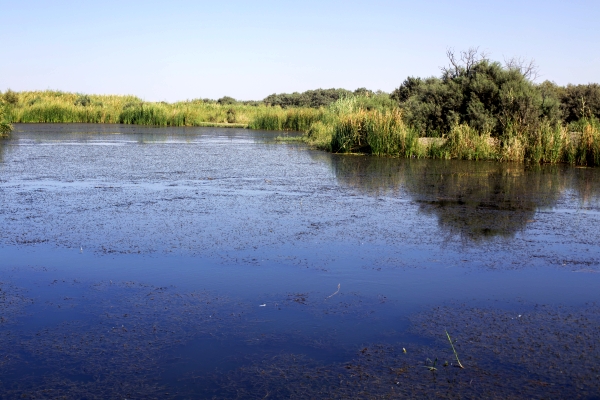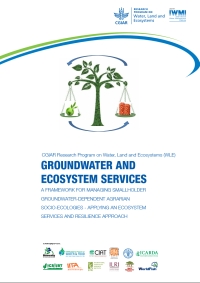Biodiversity and groundwater: the hidden link?
The Azraq Oasis in eastern Jordan is a rare splash of green in a parched landscape. Straddling a major trade route, the oasis and its attendant wetlands were for centuries a major draw for the caravans that criss-crossed the region, providing water and rest for thirsty travellers and their pack animals. The waters also attracted thousands of migratory birds and other wildlife. But as agriculture in Jordan began to develop and its cities grew, so increasing amounts of water were pumped out of the aquifers that fed the oasis. By 1992 the wetlands were no more.

The numbers of birds plummeted, ecotourism collapsed. Local people lost out. As the level of the water table dropped, the salinity of groundwater nearly doubled, with potentially dire consequences for local farmers. Slow-burning fires began moving through the ground in areas that were formerly deep swamps, threatening further land degradation.
Fortunately a rehabilitation program was started to address the problem, curbing over-exploitation of groundwater and re-establishing ponds and reed beds. The process is slow, but the natural systems are beginning to re-assert themselves.
The story of Azraq sharply illustrates the extent to which many natural systems, associated biodiversity and hence people, rely on groundwater. Most people would not automatically make a link between, say, irrigation using groundwater and biodiversity. But just because the water under our feet is “hidden” doesn’t mean it is any less important to ecosystems. It may be “out of sight”, but should not be “out of mind”. Groundwater is not a stagnant, stable and infinite resource. It is usually flowing (albeit slowly) somewhere; into a stream or wetland, for example, or to the coast. So, by abstracting and using it in crop production, ot
her natural systems are deprived of this water.
This concept underpins a new set of guidelines published by the CGIAR Research Program on Water Land and Ecosystems (led by IWMI) which seeks to establish some basic principles for co-management of groundwater and ecosystems and people dependent on them.
In Groundwater and ecosystem services: A framework for managing smallholder groundwater dependent agrarian socio-ecologies the authors argue that failure to take ecosystems into account when planning for groundwater use is a recipe for disaster.
“Using groundwater for irrigation can have huge benefits,” says IWMI’s Karen Villholth, one of the report’s authors. “Time and again we have seen how it can benefit poor farmers, boosting incomes and improving food production. But many natural processes rely on groundwater as well. Focussing on only the productive aspects of groundwater irrigation could potentially lead to ecosystem degradation – and that is a big problem because successful and resilient agriculture ultimately relies on thriving ecosystems.”
The report outlines six key principles that farmers and developers should follow to ensure that groundwater use is both sustainable and preserves ecosystems. Online assessment tools are also highlighted so that practitioners can monitor their interventions.
“It’s important that these approaches are adopted before new groundwater development is undertaken,” says Villholth. “The challenge is to strike the right balance between using groundwater for irrigation and other uses and the need to protect biodiversity and vital ecosystem processes. Equally, all parties likely to be affected by any developments should be included in the process at an early stage. Researchers can help by consulting widely, offering technical support and training and making sure that these basic principles are widely adhered to.”
The authors hope that this new approach of linking well-functioning of natural systems with groundwater will be adopted widely to ensure that the many benefits of groundwater use are not attained at the expense of natural systems.
[hr top=”yes”/]
Also read this post on the blog from the CGIAR Research Program on Water, Land and Ecosystems:
In many developing countries, groundwater for irrigation and drinking water has played a critical role in development. But unsustainable use and uninformed land use changes are depleting the quantity and deteriorating the quality of groundwater and associated ecosystems, upon which livelihoods are dependent. Read more…


